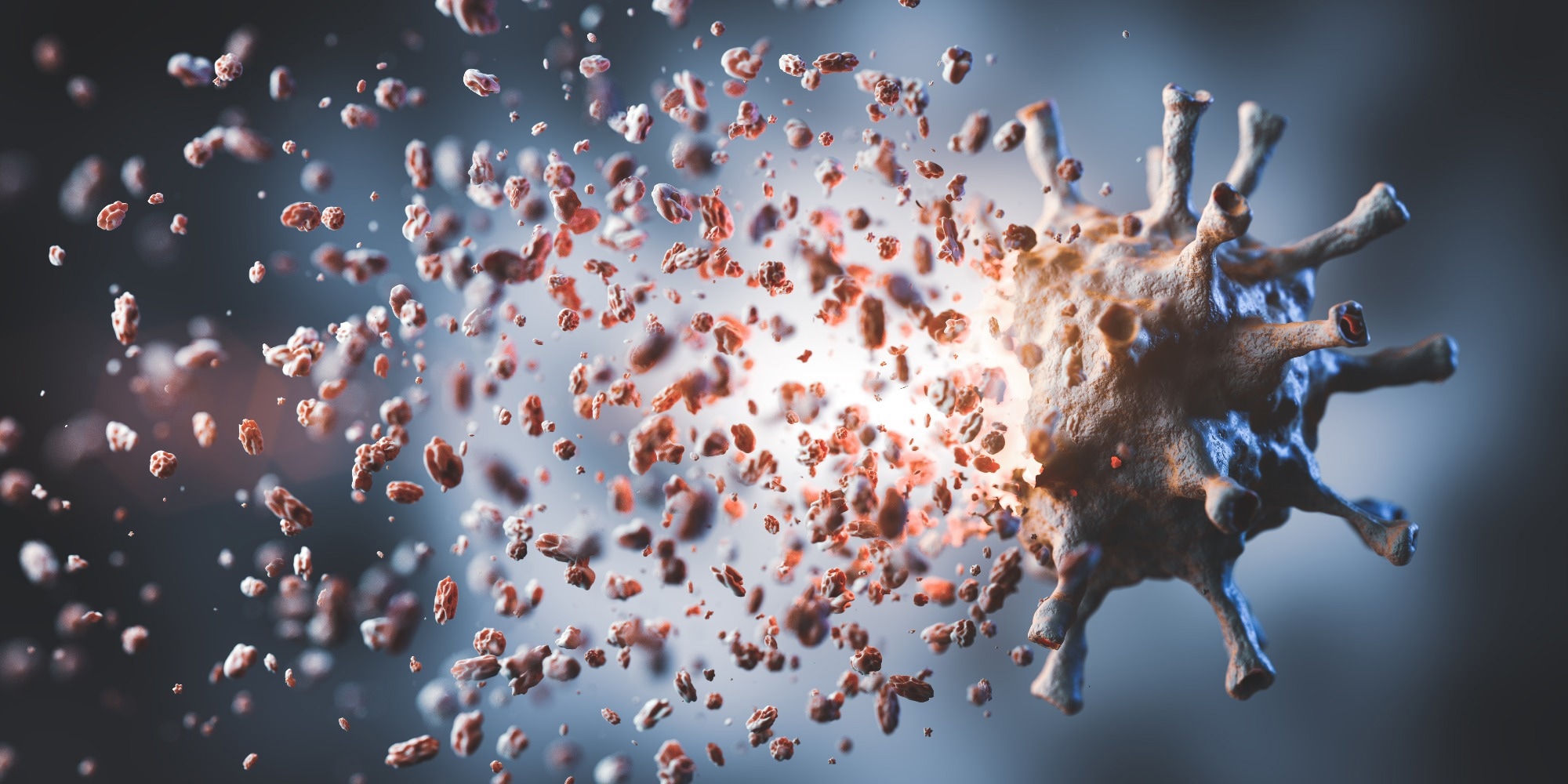In a recent study published in Virology, researchers pursued direct-acting severe acute respiratory syndrome coronavirus-2 (SARS-CoV-2) drugs that compete for nucleotide-binding pockets (NBPs) of SARS-CoV-2 proteins.
 Study: Multi-target direct-acting SARS-CoV-2 antivirals against the nucleotide-binding pockets of virus-specific proteins. Image Credit: PHOTOCREO Michal Bednarek/Shutterstock
Study: Multi-target direct-acting SARS-CoV-2 antivirals against the nucleotide-binding pockets of virus-specific proteins. Image Credit: PHOTOCREO Michal Bednarek/Shutterstock
Background
SARS-CoV-2 belongs to the beta-coronaviruses (β-CoV) subgroup of the family Coronaviridae in the order Nidovirales. It infects several mammalian species, including humans causing acute respiratory infections. It is an enveloped, positive-sense single-stranded ribonucleic acid (RNA) virus with a 13-kilobase genome having 14 open reading frames (ORFs). The 5ˈ end of the SARS-CoV-2 genome has ORFs 1a and 1b that encodes polyproteins, pp1a and pp1ab, which translates into non-structural proteins (NSPs) 1 to 16. The remaining 3ˈ one-third genome encodes structural proteins, including spike (S), membrane (M), envelope (E), and nucleocapsid (N).
SARS-CoV-2 has evolved with more than 40,000 genomic variants since its emergence in 2019. The SARS-CoV-2-triggered pandemic continues to claim lives worldwide. Hence, there is an urgent need for antiviral medications that could combat its recurrence and emergence of new variants of concern (VOCs). Biologists have worked out 3D structures of almost all the SARS-CoV-2 proteins in a short period, all of which are now available in the Protein Data Bank (PDB) and could aid in structure-based drug discovery.
Previously, researchers have formulated nucleotide derivatives competing with the physiological nucleotides for binding to the NBPs of the viral proteins as antiviral medications. For instance, the US Food and Drug Administration (FDA) approved azidothymidine (AZT) as an anti-human immunodeficiency virus (HIV) drug that acts against its reverse transcriptase (RT) protein.
About the study
In the present study, researchers attempted to repurpose pharmacologically active compounds that bind to the NBPs of six SARS-CoV-2 proteins. They specifically targeted nsp12, nsp13, nsp14 C-terminal domain (CTD) and N-terminal domain (NTD), nsp15, nsp16, and N protein. They identified these NBPs using atomic structures available in the PDB. Likewise, they deployed a structure-assisted in silico virtual screening of three libraries for rapid identification of multi-target and efficacious antivirals against SARS-CoV-2.
The single molecule multi-target (SMMT) approach helped the researchers get multiple potential anti-SARS-CoV-2 small molecules with multi-target characteristics. They used isothermal calorimetry (ITC) to measure binding parameters, such as affinity and kinetics, of the identified antiviral compounds. Finally, the team used cell-based SARS-CoV-2 assays to confirm the antiviral activity of a subset of these compounds.
The team performed molecular docking of several nucleotide mono- and tri-phosphate (NMPs/NTPs) [(e.g., adenosine mono- and tri-phosphate (AMP and ATP)], and remdesivir. The latter, a nucleotide prodrug of an adenosine analog, served as a positive control. The researchers marked any molecule as a potential drug candidate if it exhibited a favorable molecule toxicity range and pharmacokinetic (PK) properties. They used SwissADME online tool for the in silico drug-likeness analysis that characterized the selected molecules based on their Absorption, Distribution, Metabolism, and Excretion (ADME) properties.
Further, the team used the BOILED-Egg (Brain Or IntestinaL EstimateD permeation) model to predict a compounds' gastrointestinal (GI) absorption or blood-brain barrier (BBB) permeation and P-glycoprotein (Pgp) substrate/non-substrate analysis.
Study findings
Because nucleosides/nucleotides are the building blocks of RNA, i.e., the viral genome, molecule(s) targeting the nucleoside scaffold could be promising antiviral molecules. Although it is difficult to assess the in vivo behavior of these molecules, in silico methods have proved very useful in providing firm evidence of the interaction of any drug molecule with the target protein and its bioavailability inside the host organism.
First, the researchers selected the top 30 compounds whose binding energy was equal to or greater than positive control in the selected set of the SARS-CoV-2 proteins. The team predicted the drug-likeness of the best ten compounds of those 30. They obtained the final, binding energy after the compounds' molecular docking. Although these ten compounds had high binding energies for the viral targets, their physicochemical parameters for the drug-likeness did not show acceptable properties.
Further, the team evaluated these compounds using the thermodynamic criteria, which yielded only three top compounds with anti-SARS-CoV-2 potential. These were olaparib, INCB28060, and VX-809. Interestingly, three promising compounds from each library also shared similar interacting amino acids. Furthermore, three of nine potential compounds (INCB28060, Darglitazone Sodium, and Columbianadin) displayed substantial antiviral activity in different in vitro assays. The most effective compound was darglitazone sodium, which had a half maximal effective concentration (EC50) value under 10 µM.
All three drug candidates also showed inhibitory properties, but INCB28060 and Darglitazone Sodium had the greatest anti-SARS-CoV-2 activity. Interestingly, Columbianadin is proven to have analgesic, anti-inflammatory, and antitumor properties and is also an inhibitor of voltage-gated calcium (Ca2+) channels. The antiviral effect of Columbianadin against SARS-CoV-2 via the modulation of the ion channel activity requires further experimental investigations.
Conclusion
The current study highlighted the usefulness of structure-based methods in discovering a potential drug molecule that could target multiple proteins of SARS-CoV-2. According to the authors, these drug molecules are under clinical evaluation and might soon be repurposed for antiviral therapy against SARS-CoV-2.